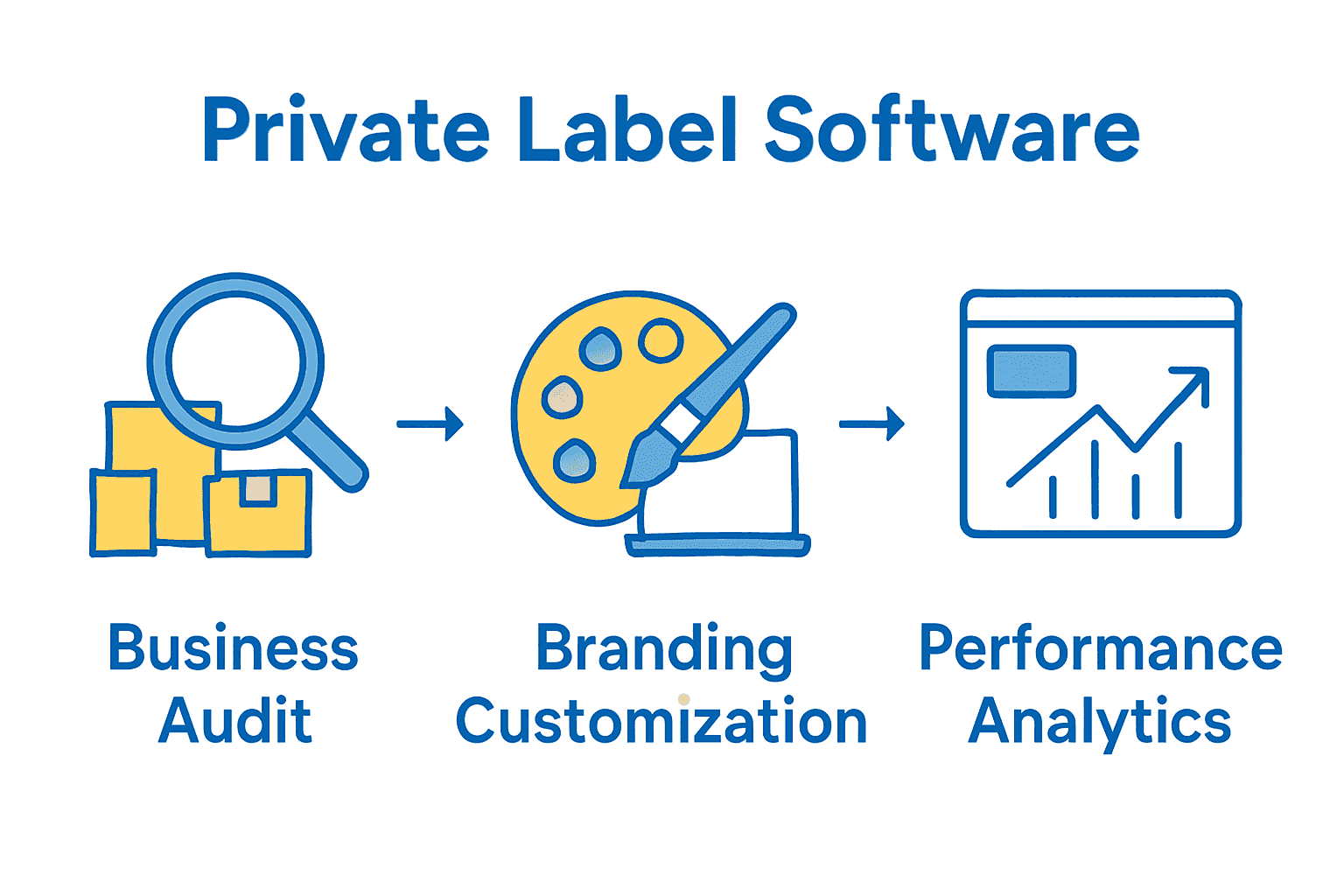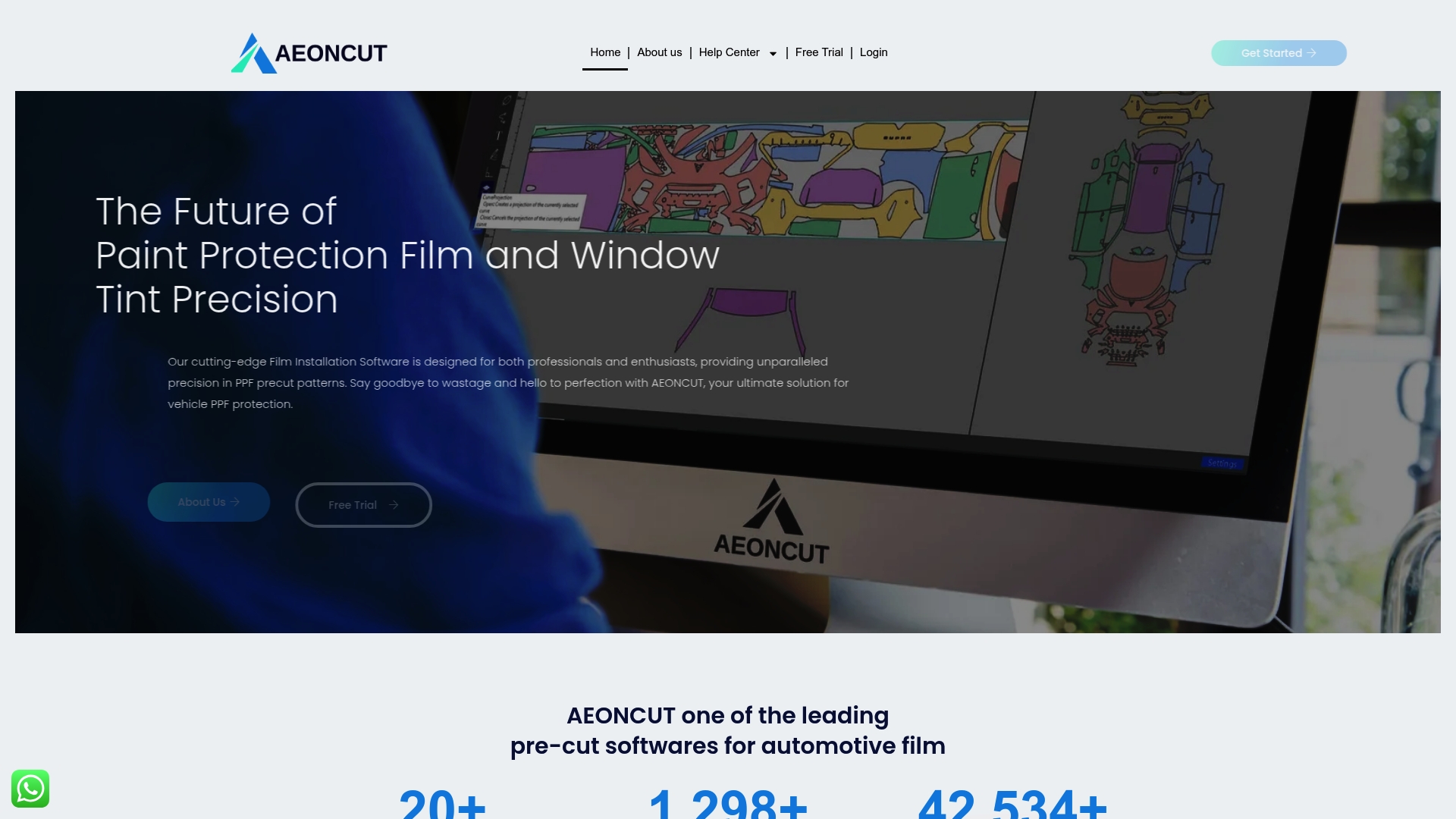
Did you know that companies with successful private label strategies can achieve profit margins up to 30 percent higher than those relying only on national brands? Private label solutions are changing how businesses drive growth and shape brand identity. For businesses exploring this model, finding the right approach means more than just copying competitors. It involves smart assessment, thoughtful customization, and building both digital and human support systems for lasting success.
Quick Summary
| Key Point | Explanation |
|---|---|
| 1. Conduct a thorough internal audit. | Evaluate your product lines and customer needs to identify gaps. This understanding informs your private label strategy. |
| 2. Define clear financial motivations. | Establish specific goals such as improved margins and customer loyalty, which will guide your private label decisions. |
| 3. Customize software meaningfully. | Tailor software features to create a cohesive brand experience, not just cosmetic changes. Ensure it feels proprietary. |
| 4. Train teams for successful adoption. | Use varied training styles and continuous support to foster technological adaptability and improve software usage across your organization. |
| 5. Implement robust analytics for insights. | Focus on detailed data collection to track performance and make informed decisions that enhance your market strategies. |
Table of Contents
- Step 1: Assess Business Needs For Private Label Solutions
- Step 2: Customize Software Features For Unique Branding
- Step 3: Integrate Pattern Libraries And Update Management
- Step 4: Train Teams And Enable Efficient Software Adoption
- Step 5: Monitor Usage Data And Optimize Market Strategies
Step 1: Assess Business Needs for Private Label Solutions
Getting your private label strategy right starts with a comprehensive understanding of your unique business landscape. This step helps you determine whether private label solutions can genuinely transform your distribution model and deliver meaningful competitive advantages.
Begin by conducting a thorough internal audit of your current product lines and market positioning. According to McKinsey research, distributors must base their private label strategy on a deep understanding of customer needs and product category characteristics. This means looking beyond surface level metrics and diving into nuanced market insights.
Start by mapping out your existing product portfolio and identifying categories where you could potentially develop a compelling own brand offering. Look for areas with less intense national brand competition and where you can provide genuine value to customers. Consider questions like: Where do current market solutions fall short? What unique needs are not being fully addressed?
Next, evaluate your financial motivations. As research from Optimix explains, private labels allow distributors to control production, marketing, pricing, and margins. Your assessment should include specific goals such as improving profit margins, gaining pricing flexibility, and building stronger customer loyalty through differentiated products.
Pro Tip: Do not rush this assessment. Take time to gather comprehensive data and validate your assumptions before committing resources to private label development.
Your goal in this initial stage is not to make a final decision but to gather strategic intelligence. The insights you collect will guide subsequent steps in developing a robust private label strategy that aligns with your business objectives and market opportunities.
Once you have completed this comprehensive assessment, you will be prepared to move forward with more targeted market research and product concept development. The groundwork you lay now will determine the potential success of your private label initiative.
Here’s a comparison of key considerations when assessing business needs for private label solutions:
| Assessment Area | What to Examine | Example Questions |
|---|---|---|
| Product Portfolio | Current categories and gaps | Where do market offerings fall short? |
| Market Positioning | National brand competition | What unmet needs exist for customers? |
| Financial Goals | Margin improvement, pricing control | How will private label affect profit? |
| Customer Needs | Unique value opportunities | What do our customers want most? |
Step 2: Customize Software Features for Unique Branding
Transforming generic software into a branded solution requires strategic customization that goes beyond superficial changes. Your goal is to create a seamless experience that looks and feels like your own proprietary product.
According to Wikipedia, brandable software enables complete rebranding including name, graphics, installer, and links. This means you are not just adding a logo but fundamentally reshaping the user experience to reflect your brand identity. Learn more about customizable PPF software features that can help you achieve this transformation.
Start by evaluating the software’s customization capabilities. As research from Prokuria highlights, effective white label solutions support comprehensive branding through custom domain integration, logo placement, color palette adjustments, and UI text modifications. Think of these elements as the building blocks of your unique digital identity.
Consider your target audience and how each customization element can create a more cohesive brand experience. Your color scheme should align with your company’s visual identity. The language and terminology used in the interface should match your communication style. Even small details like button shapes and loading animations can reinforce your brand personality.
Pro Tip: Consistency is key. Ensure every customized element feels intentional and connected to your overall brand narrative.
Remember that customization is not just about aesthetics. It is about creating a software experience that feels authentically yours. Your users should feel like they are interacting with a native tool developed specifically for their needs.

By carefully tailoring each aspect of the software interface and functionality, you transform a generic solution into a powerful extension of your brand. The next step will involve testing these customizations to ensure they deliver the seamless user experience you envision.
Step 3: Integrate Pattern Libraries and Update Management
Successful private label strategies require robust systems for managing design patterns and keeping your software updated. This step focuses on creating a streamlined approach to pattern integration and version control that keeps your branded solution current and competitive.
According to Encodify’s research on private label management, effective solutions must integrate packaging specifications, product content, and creative patterns into a centralized system. Explore advanced pattern management techniques that can help you achieve seamless workflow integration.
Begin by assessing your current pattern library and update mechanisms. Optimix highlights the critical need for rapid innovation and omnichannel consistency in private label management. This means your pattern library should not just be a static collection but a dynamic resource that can be quickly adapted across different platforms and product lines.
Implement a robust version control system that allows for easy tracking and implementation of new patterns. Consider creating a structured workflow where new design patterns can be reviewed, approved, and deployed efficiently. Your goal is to minimize manual intervention while maintaining high standards of quality and brand consistency.
Pro Tip: Develop a clear protocol for pattern submission, review, and approval to prevent version conflicts and maintain design integrity.
Ensure that your update management process supports automatic synchronization across different channels. This means your pattern library should be cloud based and capable of pushing updates to all relevant platforms simultaneously. Think of it like a central nervous system for your design assets.
By creating a sophisticated pattern library and update management system, you transform your software from a static tool to a living brand ecosystem. The next phase will involve stress testing these integration mechanisms to ensure smooth performance and reliability.
Step 4: Train Teams and Enable Efficient Software Adoption
Successful private label software implementation hinges on effective team training and seamless technology adoption. Your goal is to transform potential resistance into enthusiastic engagement across your entire organization.
According to McKinsey research, successful go-to-market strategies require comprehensive sales team enablement through clear incentives, targeted training, and supportive marketing resources. Discover comprehensive training strategies for software adoption that can accelerate your team’s learning curve.
Start by developing a multi-layered training approach that addresses different learning styles and skill levels. As insights from InfiniteMLM suggest, customizing software with intuitive business logic and branded user experience can significantly reduce training friction. This means creating training materials that are not just informative but also aligned with your specific workflow and brand identity.
Design a structured onboarding program that includes hands-on workshops, video tutorials, interactive simulations, and ongoing support channels. Break down complex features into digestible modules, allowing team members to progressively build their confidence and competence with the new software.
Pro Tip: Identify and nurture internal champions who can serve as peer mentors and help accelerate software adoption across different departments.
Implement a continuous learning framework that goes beyond initial training. Regular refresher sessions, advanced workshops, and feedback mechanisms will help your team stay updated and maximize the software’s potential. Consider creating a knowledge base or internal community where team members can share insights and best practices.
By investing in comprehensive training and support, you are not just teaching software skills but building a culture of technological adaptability and continuous improvement. The next phase will involve measuring adoption metrics and refining your training approach based on real-world feedback.
Step 5: Monitor Usage Data and Optimize Market Strategies
Transforming raw data into actionable market insights is the cornerstone of successful private label strategies. Your goal is to build a sophisticated analytics framework that transforms usage metrics into precise competitive advantages.
According to McKinsey research, detailed analytics are critical for tracking private label performance against national brands. Learn more about advanced usage tracking techniques that can help you unlock deeper market understanding.
Begin by establishing comprehensive data collection mechanisms across all relevant channels. Optimix emphasizes the importance of real-time data monitoring for sales, inventory, channel performance, and customer trends. This means creating an integrated dashboard that provides instant visibility into your software’s usage patterns and market performance.
Implement robust analytics tools that can segment data across multiple dimensions. Look beyond surface level metrics to understand nuanced user behaviors, feature utilization rates, and potential friction points. Your analysis should reveal not just what is happening but why it is happening.
Pro Tip: Develop a regular reporting cadence that transforms raw data into strategic narratives your team can act upon quickly.
Create a feedback loop where insights directly inform product development, marketing strategies, and user experience improvements. This means treating data as a living, breathing resource that continuously shapes your private label approach. Pay special attention to comparative metrics that show how your solution performs against competitors.
By developing a sophisticated usage monitoring strategy, you are turning data into your most powerful strategic asset. The final step will involve translating these insights into concrete market positioning and product evolution strategies.

Take Full Control of Your Distribution with AEONCUT’s Private Label Power
In today’s fast-moving automotive PPF market, distributors face growing pressure to differentiate their offerings and secure lasting margins. The article highlighted how vital it is to address bottlenecks such as generic tools, missed branding opportunities, and outdated pattern management. With AEONCUT, you access a tailored software solution designed to eliminate those struggles by giving you the freedom to customise pattern libraries, accelerate product launches and control your entire market approach. Unlike off-the-shelf solutions, AEONCUT enables your team to build a branded, cloud-based cutting software that reflects your values and drives real loyalty.

Are you ready to remove inefficiency and own your space? Experience the advantage of a fully customisable PPF platform with unlimited patterns, robust support, and intelligent features trusted by professionals worldwide. Visit AEONCUT’s main site to learn more about our leading private label PPF software features and get insights on training your installers for seamless adoption. Take the next step towards market control and request your demo today.
Frequently Asked Questions
How can private label software help me control my market?
Private label software provides distributors with control over production, marketing, and pricing, enabling them to create unique offerings. To start, assess your current product portfolio and identify gaps that private label solutions can fill to differentiate your brand.
What steps should I take to customize private label software for my brand?
Begin by evaluating the software’s customization capabilities such as logo placement, user interface design, and language adjustments. Focus on aligning these elements with your brand identity, which can create a cohesive experience for your users and reinforce your market presence.
How do I train my team to use private label software effectively?
Implement a structured training program that includes hands-on workshops and video tutorials to cater to different learning styles. Ensure ongoing support is available to help team members quickly adapt to the new software and use its features effectively within the first month of rollout.
What types of data should I monitor to improve my private label strategy?
Focus on tracking sales data, customer trends, and feature utilization rates to gain insights into your private label performance. Establish a regular reporting schedule to transform this data into actionable strategies within 30 days, helping you refine your approach based on real-world behavior.
How can I ensure my private label offerings meet customer needs?
Conduct a thorough assessment of your customer base to identify unmet needs and potential product gaps in the market. Use this information to tailor your private label solutions, aiming to enhance customer loyalty and satisfaction in the process.
Recommended
- Private Label PPF Software – AEONCUT CUTTING PRECUT SOFTWARE
- Top 5 PPF and Tint Cutting Software for Professionals 2025 – AEONCUT PPF Pre-cut Cutting software
- PPF Cutting Software: Essential Guide for Installers 2025 – AEONCUT PPF Pre-cut Cutting software
- Best PPF Software 2025: Top Picks for Auto detailing businesses – AEONCUT PPF Pre-cut Cutting software



